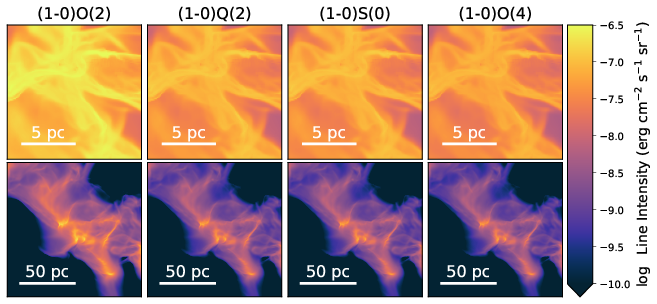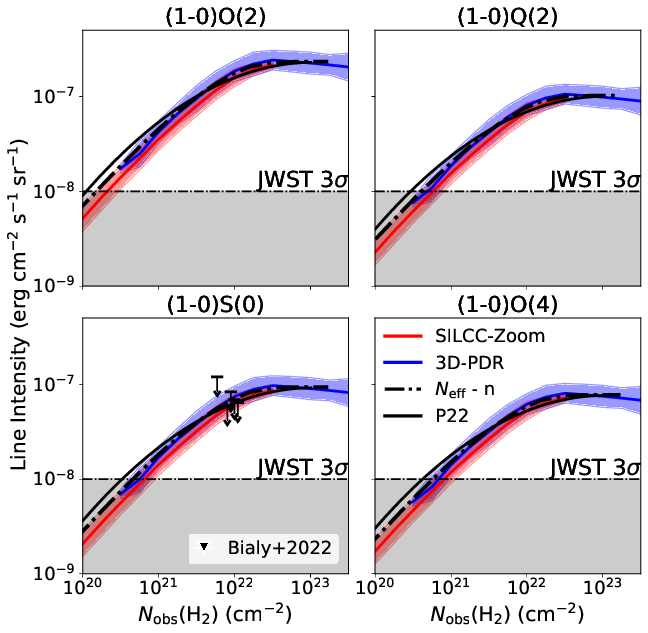The robustness of cosmic-ray-induced H2 line emission on astrochemical model assumptions
Brandt Gaches
The chemistry of the dense, molecular interstellar medium is driven by ion-neutral reactions due to the cold temperatures. The degree of ionisation is a crucial factor in determining the physical and chemical properties of the molecular gas. Energetic particles, or cosmic rays, in particular protons with energeries less than 1 GeV, are the dominate source of ionisation in regions shielded from ultraviolet radiation. Therefore, constraining the flux of cosmic rays, parameterised through the cosmic-ray ionisation rate is crucial to our understanding of the chemistry of the interstellar medum.
Determining the cosmic-ray ionisation is hindered by the inability to directly detect the low-energy cosmic rays in molecular clouds. As such, astronomers rely on tracers: in particular the chemical signatures of cosmic-ray ionisation. Recently, it was proposed that the infrared rotation-vibration emission lines from molecular Hydrogen (H2) can be used as sensitive probe of the ionisation rate. Previous calculations assumed fully molecular 1D models. We computed both 1D and 3D astrochemical models to predict the cosmic-ray-induced infrared H2 emission. Figure 1 shows the H2 emission from two different 3D models for four different lines: a cloud from a high-resolution simulation representing a dense molecular cloud (top) and a cloud taken from the SILCC-Zoom simulations (bottom).
Figure 2 shows the integrated line intensity as a function of observed H2 column density for the four different lines. The figure compares the two 3D models with a one-dimensional model (Neff - n) and a fully moleular slab model (P22), taken from Padovani et al. (2022). The bottom left panel also shows the current upper limits from Bialy et al. (2022). What we find is that there is remarkable agreement between the different models. This shows that constraints on the cosmic-ray ionisation rate using these infrared H2 emission lines are robust against different assumptions of the astrochemical model and the density distributions. It is thus expected that the James Webb Space Telescope will enable novel investigations into the cosmic-ray ionisation rate in dense gas.
A&A Accepted, arXiv link: https://arxiv.org/abs/2206.09780

